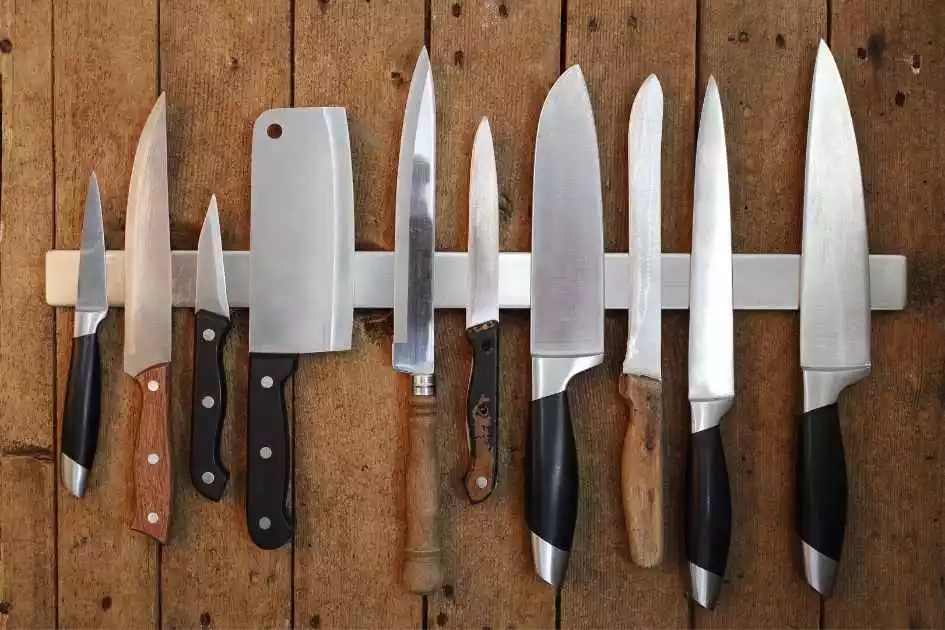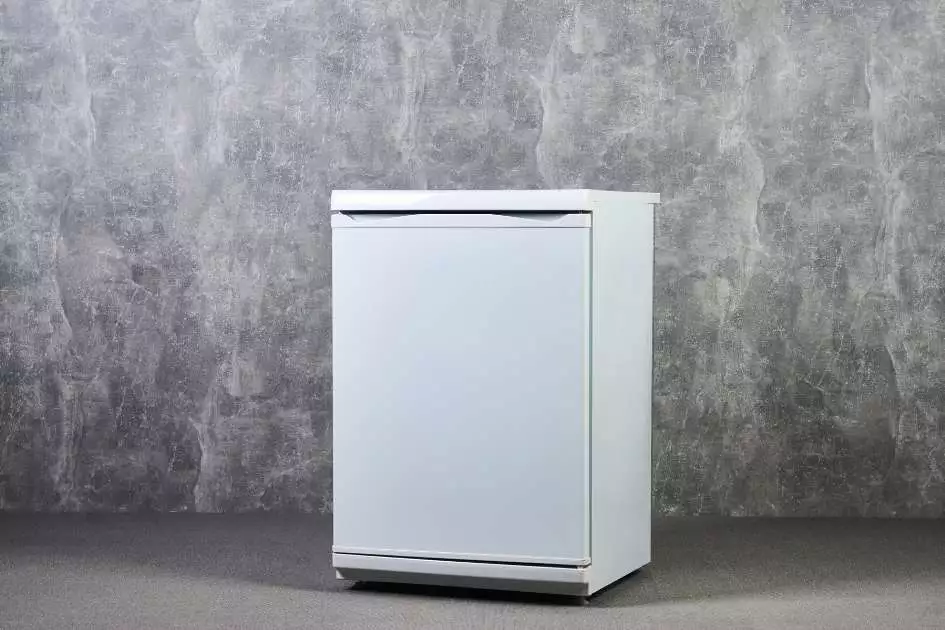The kitchen is one of the most important rooms in any home. It's where people prepare food, socialize and spend a lot of their time. With this in mind, it's no wonder why many people are starting to take more interest in what goes on inside the kitchen. One way to make life easier for yourself is by investing in quality knives that will last you years instead of just months before they start to rust or dull out. Investing in well-made blades can be expensive but if you buy them wisely then the cost should not be an issue over time.
Kitchen knives are any type of knife that is intended to be used in culinary activities. They come in a variety of shapes and sizes, and all serve different purposes. There is no one "best" knife for every job; the best kitchen knife set will depend on your needs. In this article, we'll discuss what to look for when buying a new set of knives as well as how to care for them properly so that they last longer.
Here are the common kitchen knives that you will need:
Chef's Knife
The chef's knife is one of your most important knives when it comes to preparing food. It can be used for a wide variety of purposes, from chopping vegetables and meat to slicing breads and cakes. The best type of kitchen knife set will typically come with a well-designed blade that fits comfortably in your hand. Look for a blade that is at least eight inches long, which should give you plenty of room to work. The handle should be easy to grip and the knife itself should feel balanced in your hand when it's being used.
If possible, try out different types of knives before deciding on one specific model or brand. If you are shopping online then have a friend measure your hand from wrist to fingertip. The length of the knife handle should be between half an inch and one inch longer than your measurement, with around three inches being ideal for most people.
The price range can vary significantly depending on quality; however, good chef knives typically cost anywhere from $50-$150+. Under $100 chef's knives require a thorough study and evaluation. You may also need to invest in other knives depending on your needs, such as a paring knife for detailed work and slicing small fruits.
Paring Knife
The paring knife is an all-purpose kitchen tool that can be used instead of the chef's knife when you need something more precise; it's great for cutting vegetables smaller or peeling them quickly. This knife is similar to the chef's knife in that it also offers a comfortable grip and well-designed blade. The handle should be just long enough so that you can hold onto it for more than ten seconds without feeling uncomfortable, while the entire unit itself should feel balanced when being used.
The size of this kitchen tool typically ranges from two to four inches long, with a three inch blade being the most popular. As always, try out different types of knives before deciding on one specific model or brand to ensure that you are buying something that feels good in your hand and gives you plenty of control over what's happening inside the kitchen.
Paring knives also come at various price points depending on quality; however, good paring knives typically cost anywhere from $20-$50.
Bread Knife
While the bread knife may look very similar to a chef's knife at first glance, it is actually quite different in how it functions and should not be used for chopping vegetables or meat. The edge of this kitchen tool has been ser
Bread knives are serrated and should only be used on breads, pastries, cakes and other baked goods. They can also work well for slicing cooked meats such as ham or roast beef. When buying a bread knife, look for one with a blade that is at least eight inches long and has very small serrations (the smaller the better). The handle should be ergonomically designed to fit your hand comfortably.
The price range can vary significantly depending on quality; however, good bread knives typically cost anywhere from $20-$50+. You may also need to invest in other knives depending on your needs, such as a steak knife for serving purposes.
Carving Knife
A carving knife is a big (between 8 and 15 inches) knife that is used to cut thin slices of meat. When compared to a chef knife it's a longer and thinner blade, with a rounded end that helps to separate the meat from bones. The handle should be comfortable to hold onto for an extended amount of time without causing your hand or arm any discomfort.
Carving knives work great for cutting large cooked meat like turkey, poultry and roast beef. When buying a carving knife, look for one with a blade that is at least eight inches long and has an ergonomically designed handle to fit your hand comfortably while you're slicing away.
Boning Knife
Boning knives have a very narrow blade and are designed to help you remove the bones from fish, poultry or meat with relative ease. The best way to describe how this kitchen tool works is by comparing it to a scalpel – both of them can be used on just about any food but they're intended for specific tasks that most people wouldn't dream of attempting with a chef's knife.
The price range can vary significantly depending on quality; however, good boning knives typically cost anywhere from $25-$100+. You may also get help from shears for cutting up poultry to make the job of removing bones that much easier.
Utility Knife
A utility knife is similar to a paring knife, except that it has a much longer and thinner blade (usually around five inches long). While the parer works best for cutting smaller ingredients like potatoes or herbs, you can use this kitchen tool for almost anything – including chopping vegetables.
This type of knife does not come with an ergonomic handle; however, there are other ways to ensure that your hand and arm do not become uncomfortable during prolonged periods of time: make sure the weight is well-balanced so that you won't have trouble keeping it still as you work on slicing up those fruits and veggies. Commonly used in restaurants because they're very inexpensive but just as efficient as any other good quality knives out there.
Butter Knife
Just like the name implies, this kitchen utensil is mainly used for spreading butter on breads or other baked goods. It has an extremely dull edge that will not cut into anything you use it on; however, its lack of sharpness does make it hard to spread things evenly across your food.
Butter knives are usually made out of some type of metal (stainless steel) and can come in plastic as well – both materials allow for easy clean up so there's no need to worry about having a difficult time scrubbing away foods once they've dried onto the surface of your knife.
Steak Knife
When you're hosting a dinner party, it's always nice to have plenty of utensils available for your guests when serving dishes such as meat and other entrees. Steak knives typically offer a sharp blade that is at least four inches long, with some brands offering blades that are six or seven inches in length. The handle should be ergonomically designed and easy to grip, with a full tang blade that is made from high quality materials such as stainless steel or durable plastic.
Kitchen Shears
Kitchen shears, also known as poultry scissors or kitchen and herb shears can be used for a variety of different tasks. They're mainly designed to cut through the bones of chicken, turkey and other types of meat; however they can come in quite handy when you need to snip fresh herbs or open packages that are sealed with plastic materials.
Although some people prefer to use kitchen shears for cutting up raw meat, it's not recommended because you can easily slice through your hand if the knife slides off of whatever is in front of you. To avoid this type of injury, always cut away from yourself without applying too much pressure to the blade or handle while trying to get that perfect cut.

Different Types of Edges for Kitchen Knives
One of the most common questions people have about kitchen knives is whether or not they should invest in a knife sharpener or sharpening stone. The answer depends on what types of blades you plan to use and how often you'll be using them – here are some tips for understanding different knife edges, along with details that can help you determine which ones will offer better results.
Straight Edge
The traditional straight edge knife is the least complicated of all three types. It's also one that most people are familiar with seeing, especially if they watch cooking shows on TV or read cookbooks often enough. This type of blade typically offers a fine edge and is best used for chopping herbs, dicing vegetables and slicing meats into thin strips (such as for fajitas).
Serrated Edge
A serrated edge is often referred to as a scalloped blade because it's not flat like the other two types, with many tiny teeth that allow you to saw through foods. The best example of this type of knife would be bread knives – they're great for cutting into crusty surfaces without tearing up whatever you're carving into. Serrated blades are also ideal when slicing cooked meats… unless you want them to look perfect! If so, then opt for an alternative cut such as dicing or chopping instead (which can be done by using either straight or hollow edges).
Hollow Edge
The third and final option is similar in style to the serrated one but has extra curves that are not as deep, which results in a blade that is even more rounded. This type of knife has many different names – hollow edge, granton edge and dimpled blade to name the most common ones. It works best for slicing thin cuts of meat or any other food item with delicate surfaces (like fish fillets).
Caring for Kitchen Knives
As you can see from this guide on types of kitchen knives, knowing how they work will help you determine what tasks each one should be used for - but it's also important to keep them clean after every use! You don't want bacteria sticking around on your blades because then there's no telling if these germs might transfer over into the next meal you're about to prepare.
Kitchen knives should be washed immediately after use and placed in a drying rack. Do not allow them to soak or stay submerged under water, because this can lead to rusting issues over time (which may cause the blades to become dull).
It's also recommended that you hand wash your kitchen knives instead of putting them in the dishwasher since these appliances tend to get extremely hot during cycles which is bad for metal utensils like these ones. It will destroy their quality if they're constantly exposed to high heat… plus it could damage any wooden handles too!
Using Kitchen Knives Safely and Efficiently: Tips and Tricks
When chopping vegetables such as onions with a knife isn't an option due to discomfort caused by arthritis, you'll want to consider using a food chopper for this purpose instead. This gadget is also great if your hands aren't strong enough to cut through raw meat or poultry, since it can make the job easier and more efficient too!
Another trick that some people use with their knife blades involves sharpening them with an electric machine rather than a whetstone or honing tool (which requires extra elbow grease). However, be sure not to do this by hand because then you're putting yourself at risk for getting injured in the process - unless of course you have years of experience using these types of machines already.
In most kitchens today, there's really no need to store kitchen knives in drawers. Instead they should stay on countertops, in a wooden block or on magnetized strips. This way you can easily access them when needed and keep everyone safe from cuts at the same time!
Final Thoughts
We've now covered all there is to know about common types of kitchen knives, as well as tips for caring for them and using them safely! However, while kitchen knives can also be classified as meat knives, cheese knives and specialty knives, the latter two are not as commonly known among consumers so they will be discussed in a separate article.
As far as buying the best kitchen knife set goes - consider investing in high carbon steel blades if you don't mind sharpening them more often. Otherwise, opt for stainless steel instead because they won't rust or corrode (even over time).
What's your favorite type of kitchen knife? Do you have any special tricks for using them around the house more efficiently? Let us know on our facebook page!
If you have any other questions about kitchen knives that were not covered here today – feel free to ask us! We're always happy to help our readers find the best information online and learn how each one works too.


